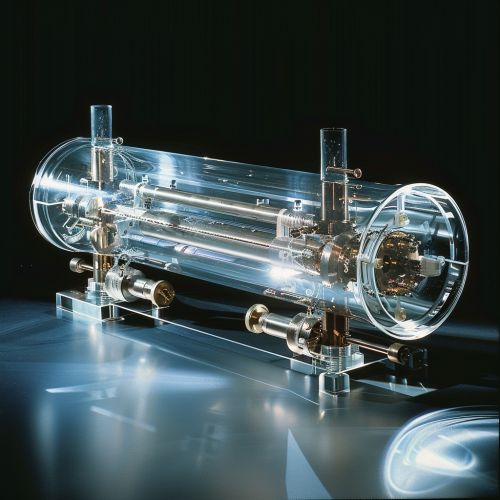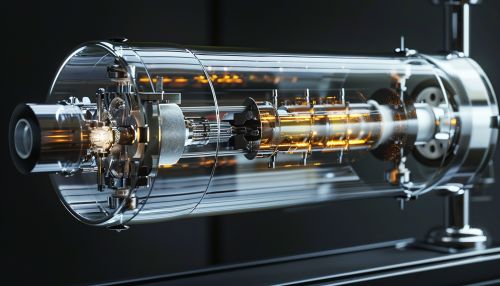X-ray generation
Introduction
X-ray generation is a process that involves the production of X-rays, a form of electromagnetic radiation with wavelengths ranging from 0.01 to 10 nanometers. These rays are widely used in various fields, including medicine, industry, and scientific research. Understanding the mechanisms of X-ray generation is crucial for optimizing their application and ensuring safety.
Historical Background
The discovery of X-rays dates back to 1895 when Wilhelm Conrad Roentgen first observed them while experimenting with cathode rays. This groundbreaking discovery revolutionized the fields of medicine and physics, leading to the development of diagnostic radiography and numerous other applications.
Principles of X-ray Generation
X-ray generation primarily involves the interaction of high-energy electrons with matter. There are two main mechanisms through which X-rays are produced: Bremsstrahlung and characteristic X-ray emission.
Bremsstrahlung
Bremsstrahlung, or "braking radiation," occurs when high-speed electrons are decelerated upon interaction with the electric field of atomic nuclei. This deceleration causes the electrons to lose energy, which is emitted in the form of X-rays. The spectrum of Bremsstrahlung radiation is continuous, with the intensity and energy distribution depending on the energy of the incident electrons and the atomic number of the target material.
Characteristic X-ray Emission
Characteristic X-ray emission occurs when an inner-shell electron of an atom is ejected, often by collision with a high-energy electron. This creates a vacancy that is filled by an electron from a higher energy level, resulting in the emission of an X-ray photon with an energy characteristic of the difference between the two energy levels. This type of X-ray emission produces a line spectrum, with specific energies corresponding to the atomic structure of the target material.
X-ray Tubes
The most common device for generating X-rays is the X-ray tube. An X-ray tube consists of a cathode and an anode enclosed in a vacuum tube. The cathode emits electrons when heated, which are then accelerated towards the anode by a high voltage. Upon striking the anode, the electrons produce X-rays through Bremsstrahlung and characteristic emission.
Components of an X-ray Tube
Cathode
The cathode is typically made of a tungsten filament, which emits electrons when heated by an electric current. This process is known as thermionic emission.
Anode
The anode, also made of tungsten or other high atomic number materials, serves as the target for the accelerated electrons. The choice of anode material affects the efficiency and spectrum of the generated X-rays.
Vacuum Enclosure
The entire assembly is enclosed in a vacuum to prevent the electrons from interacting with air molecules, which would reduce their energy and efficiency.


Synchrotron Radiation
In addition to X-ray tubes, synchrotron radiation is another important source of X-rays. Synchrotron radiation is produced when charged particles, such as electrons, are accelerated to near-light speeds and forced to travel in a circular path by a magnetic field. The resulting radiation is highly collimated and intense, making it useful for a wide range of scientific applications.
Applications of X-ray Generation
X-rays have numerous applications across various fields:
Medical Imaging
X-rays are extensively used in medical imaging to diagnose and monitor various conditions. Techniques such as radiography, computed tomography (CT), and fluoroscopy rely on X-ray generation to produce detailed images of the body's internal structures.
Industrial Applications
In industry, X-rays are used for non-destructive testing to inspect the integrity of materials and structures. This includes applications in aerospace, automotive, and construction industries.
Scientific Research
X-rays are invaluable in scientific research, particularly in the fields of crystallography, material science, and physics. They are used to study the atomic and molecular structure of materials, investigate physical properties, and conduct various experiments.
Safety Considerations
While X-rays are incredibly useful, they pose potential health risks due to their ionizing nature. Prolonged or excessive exposure to X-rays can damage biological tissues and increase the risk of cancer. Therefore, strict safety protocols and protective measures are essential when working with X-ray generating equipment.
